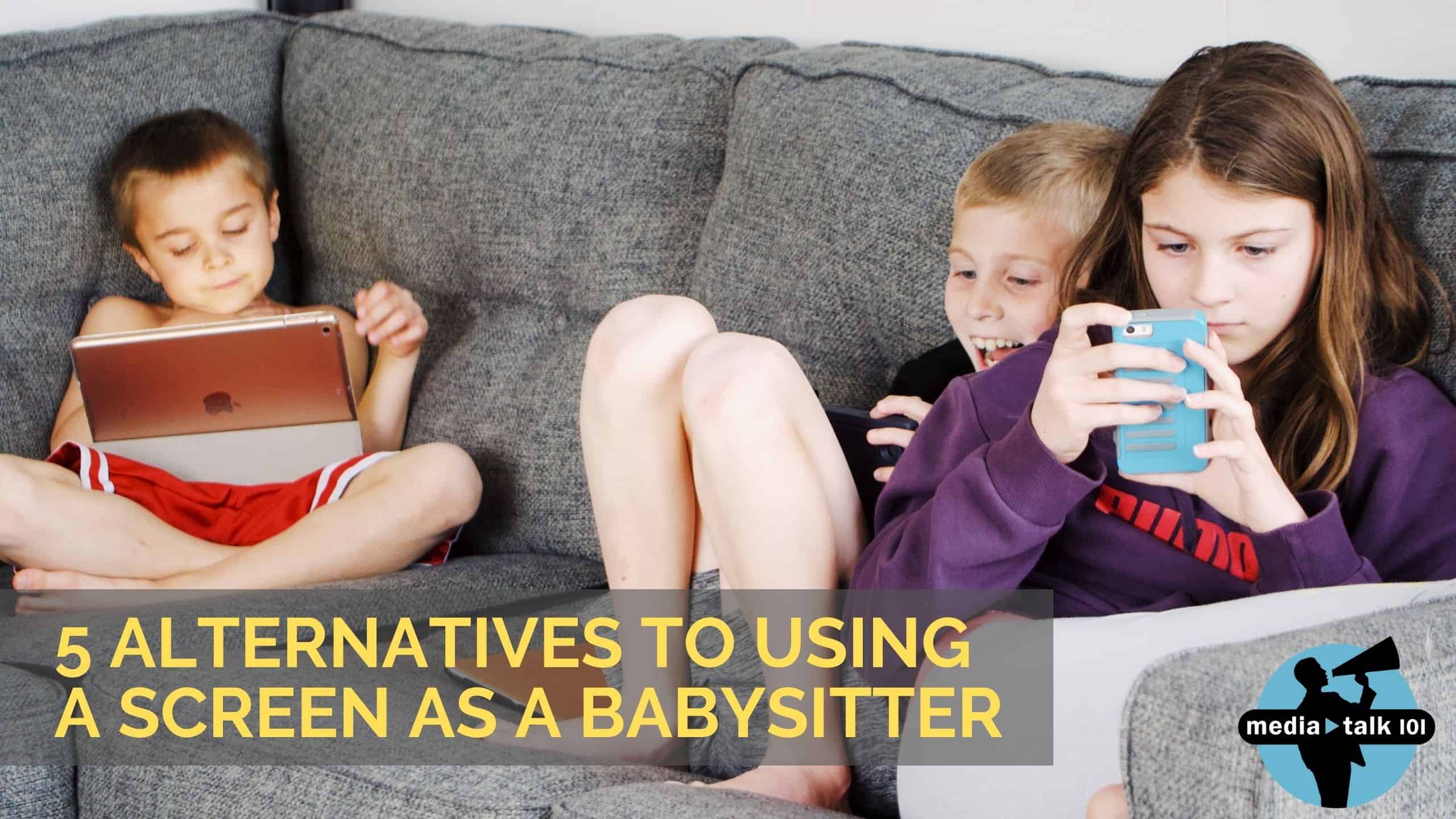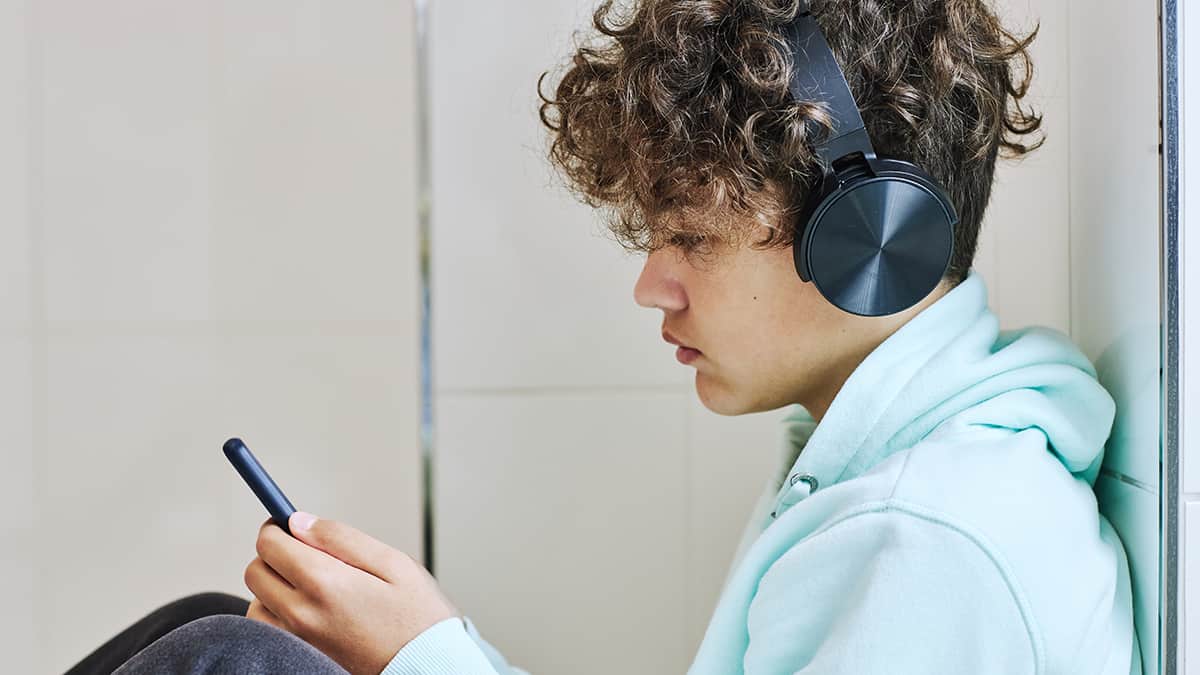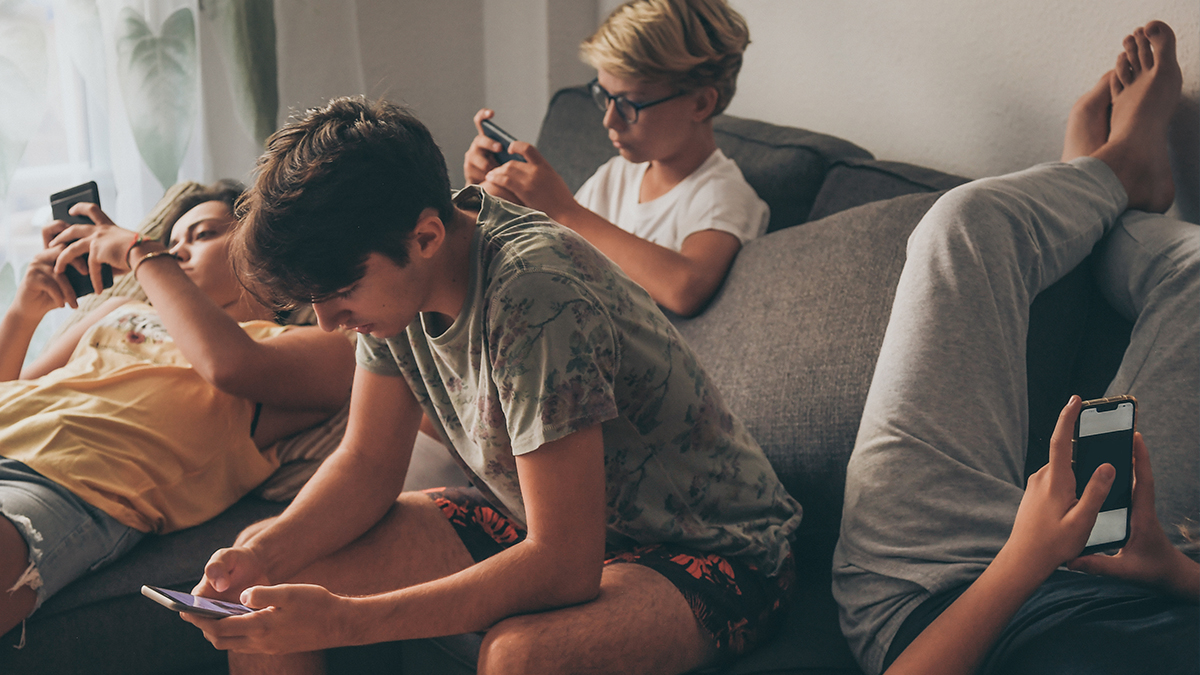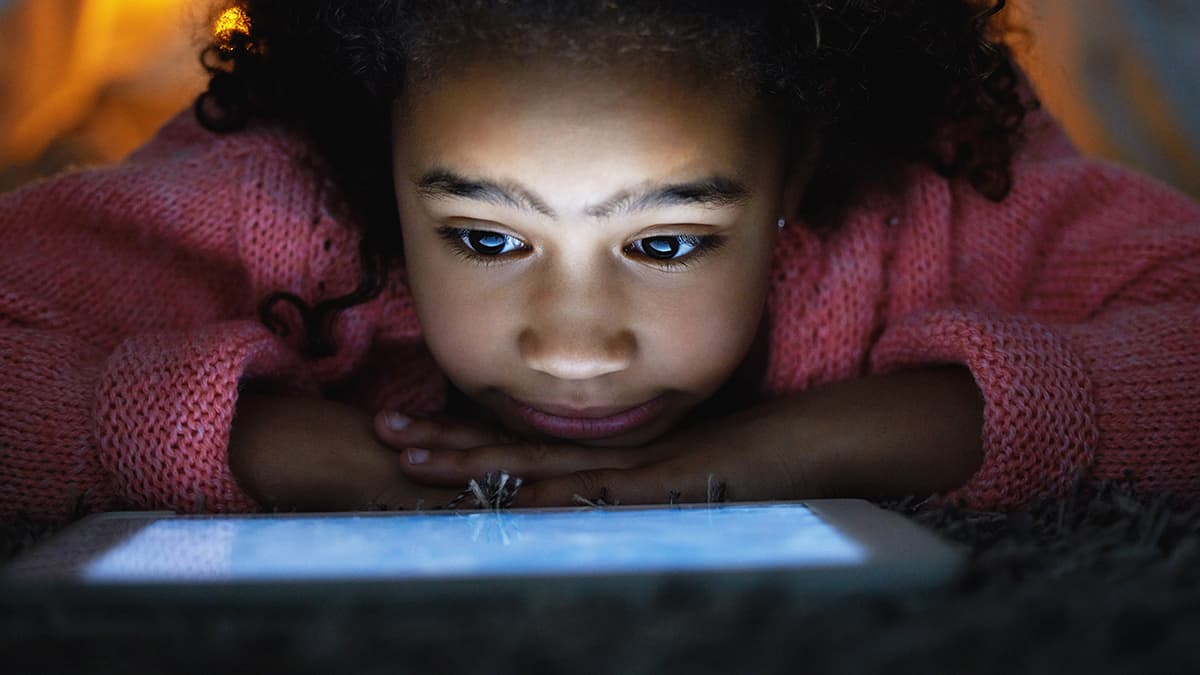
5 Alternatives to Using a Screen as a Babysitter

For most parents, the struggle is real. My wife and I have often found ourselves needing to be free from the kids to get some things done around the house, have a conversation on the phone, or just get a break – and putting them in front of screen will do the trick. My kids turn into instant zombies when we put any kind of screen in front of them, so it’s a tempting solution. And what’s the harm really? It’s not like we’re letting them watch a scary movie or something with questionable morals. Yet, every time we’ve done this, we haven’t felt good about it.
The reality is that the media we expose them to has an effect on them and it adds up. Did you know that, according to the CDC, “Children ages 8-10 spend about 6 hours a day in front of a screen using entertainment media?” [ref]Centers for Disease Control and Prevention. Division of Nutrition, Physical Activity, and Obesity. Screen Time VS Lean Time Infographic. 2018. https://www.cdc.gov/nccdphp/dnpao/multimedia/infographics/getmoving.html[/ref] And it’s even longer for pre-teens at about 9 hours a day. That’s a lot of time! Much like picking up fast food, we often are unaware of the amount of unhealthy media we are consuming. We know how those greasy burgers and fries affect us, but how about those hours of screen time? Before we unpack some alternatives to using a screen as a babysitter, let’s take a brief look at how our kids’ brains are affected by screens.
Effect #1 – Inhibits Brain Development
As the brain develops, it forms something called “myelin.” This is a lipid that connects neurons to form networks in the brain. As a child performs a task over and over, myelin is formed in the brain enabling the child to increase capability. Here is how Dr. Robert F. McGivern, a San Diego State University research psychologist puts it, “If you take a very young brain, say a three- or a four-year-old, the brain organizes itself around experience. You can train that child to learn to read very early and the brain will be well-myelinated in those parts of the brain needed for reading.” [ref]Kardaras, Nicholas. Glow Kids: How Screen Addiction Is Hijacking Our Kids-and How to Break the Trance. p. 64, 2016. Print.[/ref] So what does this have to do with screen time? Nicholas Kardaras, an Ivy-League educated psychologist, renowned speaker, and one of the country’s foremost addiction experts explains, “…there are physical differences between a child’s brain that has been appropriately stimulated and one that hasn’t been appropriately stimulated; connections that aren’t appropriately stimulated by repeated exposure experience atrophy, creating a use-it-or-lose-it situation.” Also, “…the overstimulation of the glowing, flashing screens of iPads and video games can damage myelin in neural pathways as well…Our ability to pay attention and focus, our ability to feel empathy and our ability to discern reality can all be adversely affected by overstimulation during key developmental windows.” [ref]Kardaras, Glow Kids, 64.[/ref] In short, excessive screen time can damage myelin and also prevent the development of myelin that is related to critical brain development during the formative years.
Effect #2 – Increases Potential for Screen Addiction
When a person performs an action that satisfies a need or fulfills a desire, dopamine is released, and it feels good. When this release occurs it tells the individual to do it again in order to receive the same reward. According to Nicholas Kardaras, “…certain substances or behaviors tickle dopamine more than others. For example, brain imaging research shows us that eating—especially eating craving foods like chocolate—can raise dopamine levels by 50 percent; snorting cocaine increases dopamine by 350 percent, and ingesting crystal meth creates a whopping 1,200 percent increase in dopamine…According to one groundbreaking study by Koepp in 1998, video games increase dopamine about 100 percent.” [ref]Kardaras, Glow Kids, 61.[/ref] This means that the more our children are exposed to hyper-stimulating media, the greater the chances will be that they form tech addiction.
Effect #3 – Increases the Potential of Various Mental Problems
Again quoting psychologist Nicholas Kardaras, “…video games require being awake in order for the addict to engage in the behavior. As a result of sleep deprivation, there will be HPA dysregulation. HPA dysregulation is associated with depression, anxiety, psychotic breakdowns and mental disorders.” [ref]Kardaras, Glow Kids, 78[/ref]
These three effects are really just scratching the surface. Yet, it is important to have some idea of how that screen-time-babysitter is affecting our kids. So, what is a parent to do? Here are five alternatives that we have found helpful with our children.
Alternative 1 – Act Out God’s Word
Does this sound surprising? It’s actually a great way to help kids develop creativity and grow spiritually as well. Pick a passage, give them some props (pillows, blankets, boxes, whatever), provide them with some old clothes for costumes and watch them create. When the play is over, sit down and talk about what they can learn about the Lord from the passage they explored.
Alternative 2 – Old Toys
If you are anything like our family, you have an ever-increasing accumulation of toys. Grab some toys from that box in the attic, or just dig down to the bottom of the toy bin. They’ll spend hours playing with those forgotten treasures and may even think they’re new.
Alternative 3 – Read Read Read
Kids can be trained to sit and read for periods of time – and it’s great for them. It will increase their ability to think critically, and simply be calm for a while. It may take some practice, but eventually, they will be accustomed to “reading time.” Allow them to choose books they like and talk with them about the stories after they complete a book. This is also a really cheap solution. Video games are expensive. Books are free at the library J
Alternative 4 – Constructive Activities
We like to have activity books and creative activity sets available. You can pick up activity books with puzzles, cognitive games, word searches, etc from the Dollar Store. Some activity sets that our kids have enjoyed include jewelry making, science kits, archeology sets (where they dig for gems), and model kits. Some of these will require involvement on the parents’ part, but there are many that they can do themselves.
Alternative 5 – Build a Fort
This is an easy one. I can just tell my kids to build a fort and they’ll be occupied for hours. All they need is access to blankets, pillows, and cushions. When we started to allow our kids to build forts in the living room, my wife wasn’t too keen on the idea. She didn’t like having to clean up afterward. We talked about it with the kids and they agreed to put everything away when they were done. We also timed them to see if the clean-up job was too much. They were able to get everything back within 10 minutes. Not bad!
So there you have it, five alternatives to the “screen-babysitter”. Let’s remember that these day-to-day choices are important. God tells us to…
“… bring them up in the discipline and instruction of the Lord.” (Eph. 6:4)
And “…whatever you do in word or deed, do everything in the name of the Lord Jesus, giving thanks through Him to God the Father.” (Col. 3:16)
So, what are some ideas that come to your mind?
TAKE A STEP
Talk with your kids about some activities they would like to do when you need some time to get things done.













